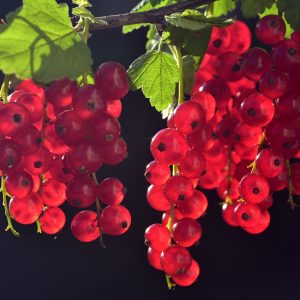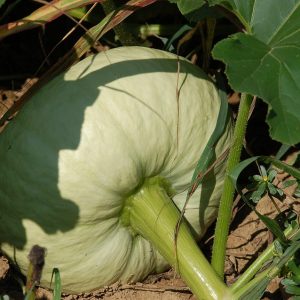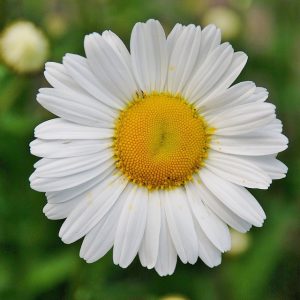E-Learning Structure
The duration of this online course is 100 hours. This consists of 12 in-depth lessons:
- Unit 1 Introduction To Herb Culture
- Lesson I Introduction to herbs, definitions, uses. Classification of herbs; use of a botanical key.
- Lesson II : Cultural Techniques…planting, soils, drainage, feeding, mulching, composting, pruning.
- Lesson III : Propagation Techniques…propagation mixes, growing structures, cuttings, seed, separation & division, layering.
- Lesson IV : Identification of plant health problems…pest & disease, frost, heat, water stress, etc.
- Unit 2 Using Herbs
- Lesson I : Processing & Use of HerbsMedicinal, culinary, perfumes, dyes, oils, distillation processes, etc.
- Lesson II : Harvesting & StorageAir drying, oven drying, microwave drying, freezing, fresh storage, when & how to harvest.
- Unit 3 The Mints (Lamiaceae)
- Lesson I : Mentha species: Peppermint, spearmint, applemint, wintermint, pennyroyal, corsican, ginger mint etc.
- Lesson II : Lavender (Lavendula varieties) & thyme (Thymus).
- Lesson III : Assorted Lamiaceae varieties: Lemon Balm, Hyssop, Rosemary, Bee Balm (Monarda), Basil, Savory, Marjoram, Sage.
- Unit 4 The Daisies (Asteraceae)
- Lesson I : Artemisia species…Southernwood, Wormwood, Tarragon, Mugwort.
- Lesson II : Miscellaneous Asteraceae: Chamomile, Tansy, Safflower, Costmary, Yarrow, Calendula, Dandelion etc.
- Unit 5 The Parsley Family (Apiaceae)
- Lesson I : Parsley, Coriander, Dill, Caraway, Angelica, Cumin, Fennel, Lovage, Sweet Cicely etc.
- Unit 6 The Onion Group
- Lesson I : Chives, Leek, Garlic chives, Tree onion, Welsh onion, etc.
- Lesson II : Garlic
- Unit 7 Other Herbs
- Lesson I : Rosaceae (Rose, Burnet, Strawberry, blackberry, etc)
- Lesson II : Miscellaneous: Lemon grass, Lemon verbena, Bay, Sorrel, Dock, Juniper, Horseradish, Evening Primrose, etc.
- Lesson III : Scented Geraniums; Australian Natives, Eucalyptus and Others
- Unit 8 Pests & Diseases
- Lesson I : Companion Planting
- Lesson II : Natural Pest Control: Herb sprays, biological control, etc.
- Unit 9 Landscaping
- Lesson I : Landscape Design Principles and Practices: How to draw a landscape plan
- Lesson II : Home Gardening With Herbs; Cottage gardens, hedges & borders, tubs, baskets, kitchen gardens, herb lawns, herb indoor plants.
- Lesson III : Public Landscaping: Historic herb grdens (Knot gardens etc), herbs for low maintenance & colour in parks..etc.
- Unit 10 Herb Farming I
- Lesson I : Establishing & Operating a Herb Nursery: Open ground vs container growing, nursery layout, potting soils, pots and labels, marketing, etc.
- Unit 11 Herb Farming II
- Lesson I : Establishing & Operating a Herb Farm: Soil Preparation and management (plastic mulch, organic mulches, cultivation), row cropping.
- Unit 12 Herb Farming III
- Lesson 1 : Evaluating Herb enterprises, assessing market demand. Deciding how to proceed.
Course Aims
- Distinguish, using illustrations and minimum but adequate comments; between major plant families which herbsbelong to.
- Compile a resource file of fifty different sources of information regarding cultivated herbs.
- Prepare an herbarium collection of one hundred different herb varieties.
- Develop guidelines for the general culture of herbs in your locality.
- Explain six different propagation methods suitable for herbs, using illustrations.
- Demonstrate how to prepare cuttings for three different herb varieties.
- Propagate three different varieties of commercially farmed herbs, using appropriate, but different propagationtechniques for each.
- Explain natural pest and disease control methods for a specified herb species.
- Explain the concept of companion planting, including three examples of proven companion plantinginterrelationships.
- Write a maintenance schedule for either a herb garden, nursery or farm.
- Describe two different harvesting techniques for herbs, by outlining the steps to follow for each.
- Determine criteria which are critical to success in the process of drying herbs.
- Compare two different drying processes for herbs, with reference to: *equipment used *procedure *cost.
- Produce two marketable herb products by harvesting, and processing material from a herb plant.
- Prepare five different herbal products for home use.
- Estimate the costs associated with processing four different herbs to a marketable stage, itemising thecomponents of costs for each.
- Determine ten different species of herbs which have potential to be grown commercially as broad acre crops inyour locality.
- Describe the process of producing a specified commercial herb crop being grown organically.
- Describe the process of producing a commercial herb crop being grown hydroponically.
- Compare broad-acre production methods, used for three different herbs, including: *propagation *planting*crop management*harvesting*post-harvest processing; by constructing a table or chart.
- Design a simple trial, to test the commercial potential of different varieties of a specific herb species.
- Conduct the simple trial you designed recording details of tasks undertaken.
- Analyse the results of the trial conducted to test the performance of a herb plants.
- Determine the variety with greatest commercial potential from those trialled.
- Prepare flow-sheet broad acre crop production schedules for four herbs; one each from Allium, Apiaceae, Asteraceae, Lamiaceae groups.
- Determine minimum facilities required to produce saleable plants in a specified herb nursery.
- Prepare a potting media suitable for growing a container herb plant of a specified species, as nursery stock.
- Describe the procedures used in a commercial herb nursery, to produce plants for sale.
- Differentiate between the procedures used for production of different products in a herb nursery, including: *Punnets of seedling herbs *Bare rooted plants *Standard container plants *Hanging baskets *Topiary.
- Grow a herb plant to a commercially acceptable standard, as a tubestock container plant, through all stages of production, without supervision.
- Prepare production schedules for two herbs from four different minor herb groups, for a specified nursery.
- Explain the use of general landscape principles and practices in the designs of two different herb gardens.
- Determine different applications for herbs in home gardens.
- Determine applications for herbs in public landscaping, referring to both difficulties and advantages in different situations.
- Design for a herb garden for a site of between 30 and 100 square metres surveyed by you, preparing a scale drawing showing the placement of at least 20 different varieties of herbs.
- Explain the reasoning behind the herb garden designed.
- Determine critical factors to establishing a new herb business, in your locality.
- Analyse the business operations of a specified herb enterprise.
- Assess market demand for a herbal product, through a phone survey and information search.
- Compare the commercial potential of three different types of herb enterprises, in your locality.
How Does A Warnborough Online Course Work?
You can start the course whenever is convenient for you. You will be studying from home and have access to support from our qualified tutors. Practical exercises and research tasks will be set at the end of each lesson – including an assignment. You will submit this assignment to your course tutor, who will mark your work and give you constructive feedback and suggestions.
If you have any questions please contact us.





